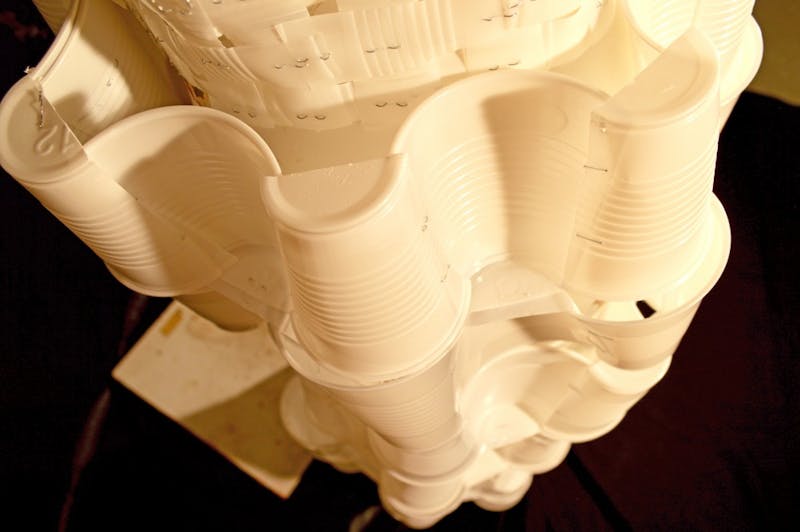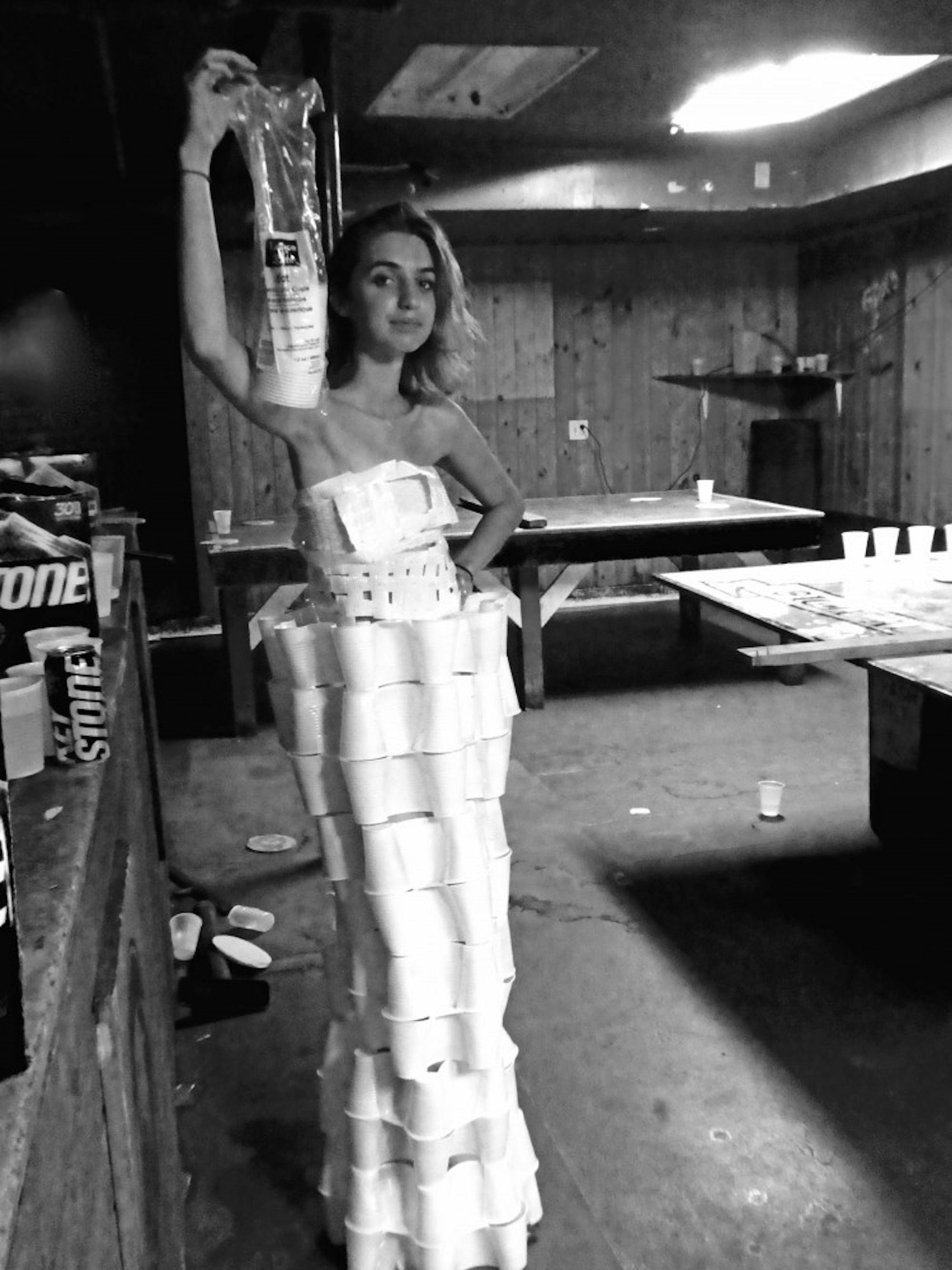It’s 9:55 a.m. and you’re dashing to your 10A on a Thursday morning. The clothes you grab from your closet (or your floor) are probably the last things on your mind. When you bought that Patagonia last year, the company’s “1% for the Planet” partnership probably was not your motivation. The fact that it took 4,000 liters of water to produce those jeans you slipped on is likely not at the forefront of your mind during your light jog to class. However, maybe these truths should be.
I am guilty of caring little about the origins of the fabrics and brands I put on my body if I think it looks cute, but let me take a moment to look at some fashion facts.
Shockingly, the fashion industry is the second largest polluter in the world, second to the oil industry, according to high-end retailer Eileen Fisher.
Surprisingly, women wear a garment an average of seven times before getting rid of it.
Unfortunately, the Environmental Protection Agency estimated that 15.1 million tons of textile waste was generated in 2013 alone.
With the rise of fast fashion brands like Zara and H&M, millennial consumers are buying more garments, but wearing them less often. We used to purchase quality over quantity, but social media and our need to share everything may have placed pressure on us to always look on-trend. The industry, and our tendency to perceive fashion as something purely to consume, perpetuates a wasteful mindset. The look and feel of clothes is integral to the fashion industry. However, in focusing our purchasing power solely on the external fashion factors, we subtly contribute to the interior industry’s unsustainability one t-shirt at a time.
At Dartmouth, we promote a similar mask of sustainability involving our social habits. As a campus, we rally around environmental initiatives and would be remiss to not share our concern for climate change to our peers. During First-Year Trips we take careful time to “leave no trace,” yet amidst the rush of our daily Dartmouth life make careless environmental faux pas such as throwing plastic into the Collis compost bin. This façade of concern often deteriorates amongst an individual’s actions, becoming merely a “Green Mask.”
When assigned a wearable architecture project for my Architecture I class this term, I knew I wanted to build a piece completely made out of objects found on campus to highlight the fashion industry and Dartmouth’s tendencies to put on this Green Mask. One central social space at Dartmouth where we hide behind our masks is within the Greek system. In spite of my desire for a less polluted planet, I consistently consume fast fashion. Similarly, I am guilty of carrying around my reusable S’well bottle by day but playing pong with 11 plastic cups and four beers by night. When asked, one fraternity brother estimated that his house goes through 2,700 beer cans in a week. In a 10-week term, that is 27,000 cans. Combined with an estimated cup usage of 62,500 per term per basement, I wondered; is there a better system?
In order to challenge this notion of our Green Masks, I aimed to create a garment made out of found objects. After wandering around campus in search of the right piece of trash, I settled on pong cups. Applying my minor in human-centered design, I worked through an iterative process with both my professor and T.A. on the best way to apply this medium. After many failed cup creations, I finally produced an oscillating cup skirt that built organically on top of the pre-existing cup shape. By cutting a Dartmouth pong cup down the middle, one creates a “half” cup, which forms the right amount of movement for a wearable piece.
I collected and cleaned approximately 200 cups from fraternities and sororities. The initial skirt turned into a wedding gown. The decision to make the piece full body was in an attempt to emphasis the sheer number of cups found the morning after a night out. Aside from the faint scent of Keystone, the dress became a column-style gown with a woven corset I dubbed “Cup Couture.” Once lightly spray-painted, so as to not make it opaque, the dress was ready to be modeled.
My professor pointed out that the column skirt style is emblematic of the columns we see across our campus architecture. I would take that one step further and relate the column in the skirt to the columns of values we hold in our lives. How might we further place value on the pillar of sustainable actions in our lives?
Kegs are 100 percent reusable and hold approximately 165 cans of beer. Instead of the 594,000 cans (22 houses with basements multiplied by the 27,000 above estimated number of cans) of Keystone a term we consume across campus basements, how about utilizing 22 reusable kegs over a term for each basement?
One pair of jeans can take up to 4,000 liters of water to produce. Instead of expecting new jeans for the season, we can buy vintage, give old jeans back to Madewell to receive $20 off our purchases, or go to H&M, who currently sources 43 percent of their cotton, the core material for denim and many sweatshirts, via sustainable means. The clothes we wear do matter and can make a difference.
If sustainability and climate change are issues we as Dartmouth students and consumers in the modern economy truly do care about, we need to take off our Green Masks and act like it.





